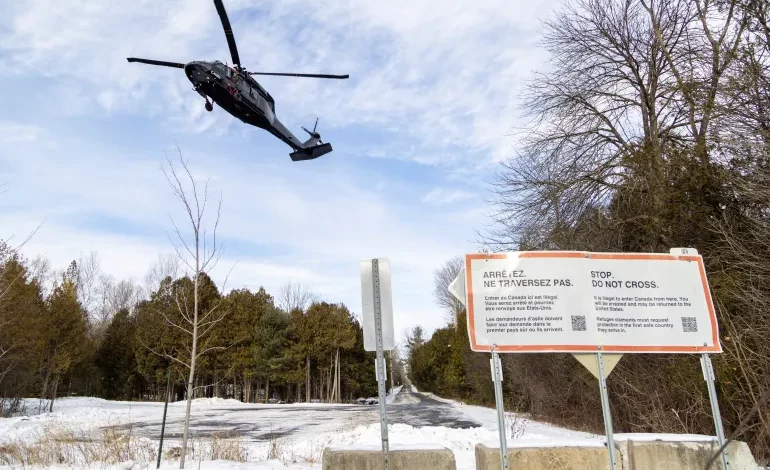As Trump’s anti-migrant push gains steam, advocates urge Canada to act

Donald Trump has been in the White House for less than three weeks, but the United States president has already launched what many say is a concerted attack on the rights of migrants and refugees.
The Republican leader has sent migrants to the notorious detention facility in Guantanamo Bay, Cuba; pushed for more deportations; effectively banned asylum; and suspended the refugee resettlement programme.
Trump has also used the threat of tariffs to pressure his country’s neighbours — Canada and Mexico — to enact harsher measures at their respective borders to stem irregular migration into the US.
For Canadian rights advocates, the Trump administration’s anti-migrant policies are cause for alarm, and they have called on Canada to stop sending most asylum seekers who arrive at the Canadian border in search of protection back to the US.“The United States government itself is becoming an agent of persecution of people within its borders,” said Wendy Ayotte, co-founder of Bridges Not Borders, a group that supports refugees and asylum seekers on the Quebec-New York border.
“When we return people to the United States as we are currently doing, … that makes us complicit with an anti-refugee regime,” Ayotte, who lives in the small Quebec town of Havelock, told Al Jazeera.
“It makes us complicit with the possibility this person will either languish in detention in poor condition or be sent back to their home country.”
Canada-US border agreement
This week, Canadian Prime Minister Justin Trudeau announced that the Trump administration had agreed to a 30-day freeze on planned tariffs for Canadian goods after he made promises to tighten border security.
“Nearly 10,000 frontline personnel are and will be working on protecting the border,” Trudeau said in a social media post.
“Canada has agreed to ensure we have a secure Northern Border,” Trump added on his Truth Social platform.
The Canadian government had already announced a plan to boost border security late last year, shortly after Trump first threatened to impose the tariffs. That $910m (1.3bn-Canadian-dollar) scheme included investments in drones, helicopters and other surveillance equipment.
Migration at the Canada-US border also is already subject to stringent rules.
In 2023, the two countries expanded what’s known as the Safe Third Country Agreement (STCA).
Under the pact, which first entered into force in 2024, asylum seekers must seek protection in whichever of the two countries they arrive in first. That means someone who is already in the US cannot make an asylum claim in Canada unless they meet specific exemptions.
The agreement previously only applied to asylum claims at official ports of entry, meaning that people who crossed into Canada irregularly could have their claims heard once on Canadian soil.
But in March 2023, Trudeau and then-President Joe Biden expanded the STCA to the entirety of the border, including between ports of entry. That has made it even more difficult for people to access the Canadian asylum system.
While there have been a few high-profile cases of people trying to get into the US from Canada, the numbers remain low compared with those at the US-Mexico border.
In the 2024 fiscal year, US Customs and Border Protection reported just under 200,000 encounters with people trying to cross into the country irregularly from Canada. On the US border with Mexico, more than 2.1 million encounters were registered over the same period.










